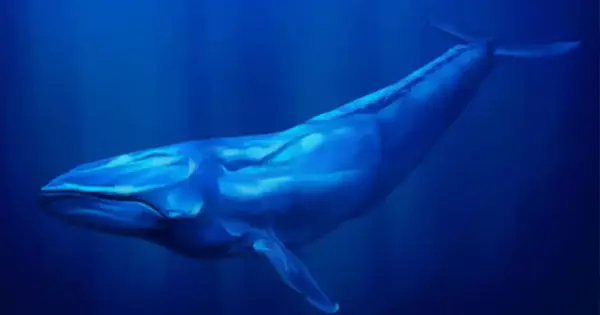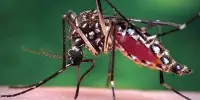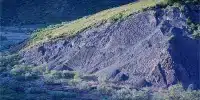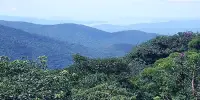Researchers have discovered how blue whales find dense aggregations of food by tracking them using their booming vocalizations. A study published today in Ecology Letters by MBARI researchers and collaborators sheds new light on the movements of mysterious, endangered blue whales. The research team listened for the booming vocalizations of blue whales using a directional hydrophone on MBARI’s underwater observatory, which was integrated with other advanced technologies. They used these sounds to track blue whale movements and discovered that these ocean giants respond to changes in wind.
Spring and summer bring coastal upwelling to California’s Central Coast. Seasonal winds push the top layer of water out to sea from March to July, allowing the cold water beneath to rise to the surface. The cooler, nutrient-rich water fuels blooms of tiny phytoplankton, kicking off the food web in Monterey Bay, from shrimp-like krill to massive whales. When the winds cause an upwelling event, blue whales seek out plumes of cooler water, which are rich in krill. When the upwelling stops, the whales migrate offshore into habitat traversed by shipping lanes.
“This research and its underlying technologies are opening new windows into the complex, and beautiful, ecology of these endangered whales,” said John Ryan, a biological oceanographer at MBARI and lead author of this study. “These findings demonstrate a new resource for managers seeking ways to better protect blue whales and other species.”
This research and its underlying technologies are opening new windows into the complex, and beautiful, ecology of these endangered whales. These findings demonstrate a new resource for managers seeking ways to better protect blue whales and other species.
John Ryan
The directional hydrophone is a type of underwater microphone that records sounds and determines their direction of origin. To use this technology to study blue whale movements, researchers needed to confirm that the hydrophone accurately tracked whales. This entailed matching the acoustic bearings to a calling whale that was being tracked by GPS. With confidence in the acoustic methods established, the research team examined two years of acoustic tracking of the regional blue whale population.
This study expanded on previous research led by MBARI Senior Scientist Kelly Benoit-Bird, which discovered that swarms of forage species reacted to coastal upwelling. This time, researchers combined satellite and mooring data on upwelling conditions, as well as echosounder data on krill aggregations, with directional hydrophone acoustic tracks of foraging blue whales.
“The MBARI team previously discovered that when coastal upwelling was strongest, anchovies and krill formed dense swarms within upwelling plumes. We now know that blue whales follow these dynamic plumes, which contain abundant food resources “Ryan elaborated.
Blue whales can tell when the wind is changing their environment and where upwelling gathers their primary food, krill. Finding these dense aggregations is crucial for a massive animal weighing up to 150 tonnes (165 tons).
While scientists have long known that blue whales occupy Monterey Bay during the upwelling season, this research has revealed that the whales closely track the upwelling process on a very fine scale of both space (kilometers) and time (days to weeks).
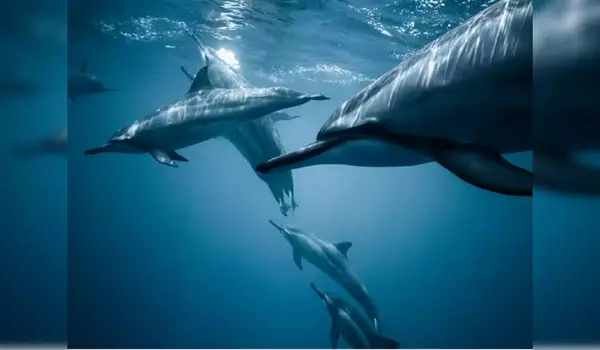
“Tracking many individual wild animals simultaneously is challenging in any ecosystem. This is especially difficult in the open ocean, which is often opaque to us as human observers,” said William Oestreich, previously a graduate student at Stanford University’s Hopkins Marine Station and now a postdoctoral fellow at MBARI. “Integration of technologies to measure these whales’ sounds enabled this important discovery about how groups of predators find food in a dynamic ocean. We’re excited about the future discoveries we can make by eavesdropping on blue whales and other noisy ocean animals.”
Background
Blue whales (Balaenoptera musculus) are the largest animals on Earth, but despite their large size, scientists still have many unanswered questions about their biology and ecology. These gentle giants seasonally gather in the Monterey Bay region to feed on small shrimp-like crustaceans called krill.
Blue whales are elusive animals. They can travel large distances underwater very quickly, making them challenging to track. MBARI researchers and collaborators employed a novel technique for tracking blue whales – sound.
MBARI’s MARS (Monterey Accelerated Research System) observatory provides a new platform for studying the ocean. The National Science Foundation-funded cabled observatory provides continuous power and data connectivity to support a variety of instruments for scientific experiments.
MBARI researchers installed an underwater microphone, or hydrophone, on the observatory in 2015. The hydrophone’s trove of acoustic data has provided important insights into the ocean soundscape, ranging from blue whale migratory and feeding behaviors to the impact of noise from human activities.
MBARI and the Naval Postgraduate School added a second hydrophone to the observatory in 2019. The directional hydrophone indicates where a sound originated. This data can reveal spatial patterns for underwater sounds, allowing you to pinpoint where the sounds originated. Researchers could follow the movements of individual whales as they foraged within the region by tracking the blue whales’ B call – the most powerful and prevalent vocalization among the regional blue whale population.
Researchers compared directional hydrophone recordings to data logged by tags previously deployed on blue whales by Stanford University scientists. Validating this new acoustic tracking method opens up new possibilities for tracking the movements of multiple whales at the same time. It may also facilitate animal-borne tag research by assisting researchers in locating whales to tag.
“This paper’s integrated suite of technologies represents a transformative tool kit for interdisciplinary research and mesoscale ecosystem monitoring that can be deployed at scale across protected marine habitats. This is a game changer that advances both cetacean biology and biological oceanography “Jeremy Goldbogen, an associate professor at Stanford University’s Hopkins Marine Station and one of the study’s coauthors, agreed.
This new methodology has implications not only for better understanding how whales interact with their environment and with one another, but also for better management and conservation.
